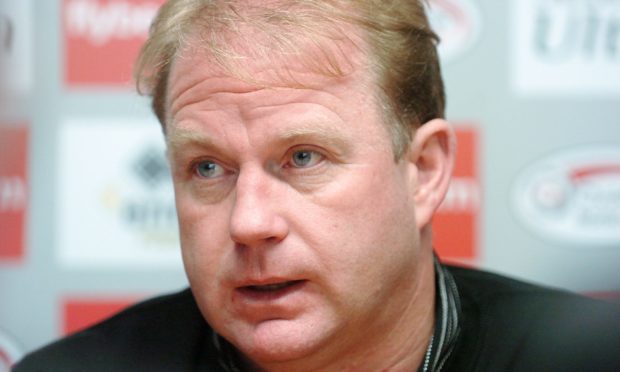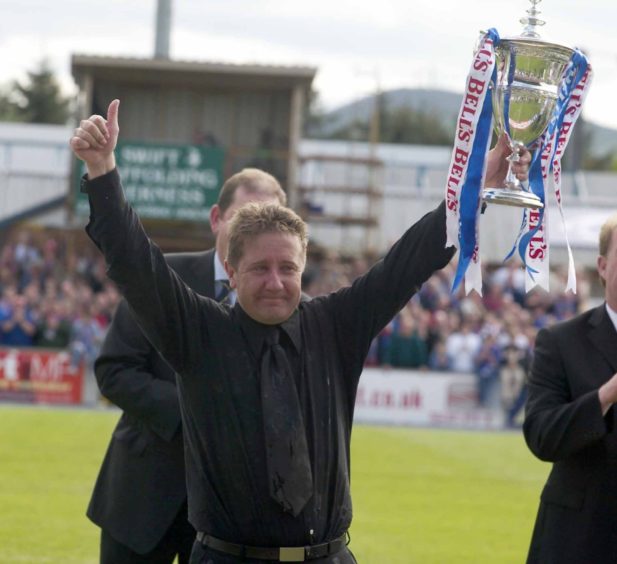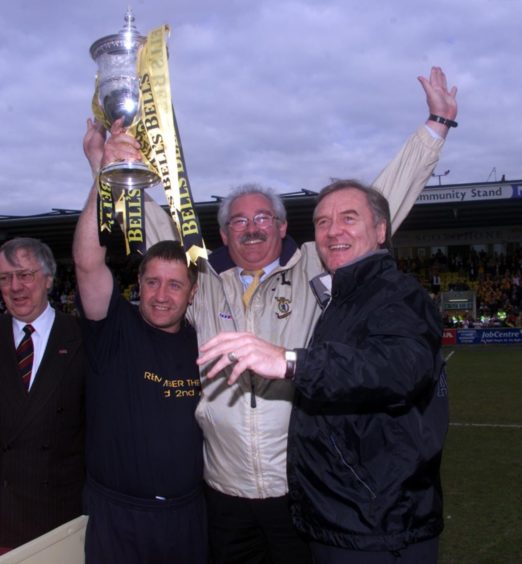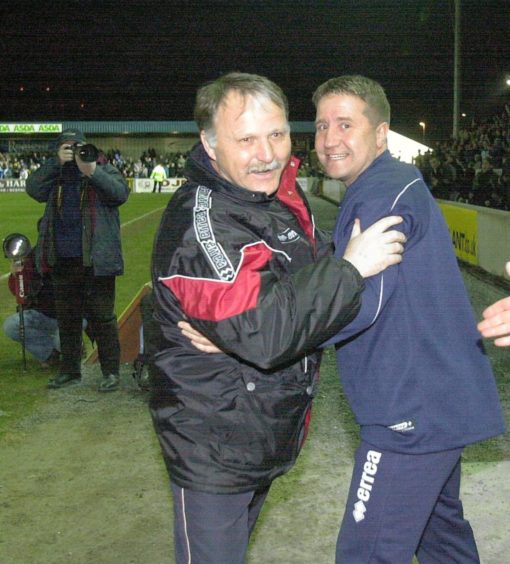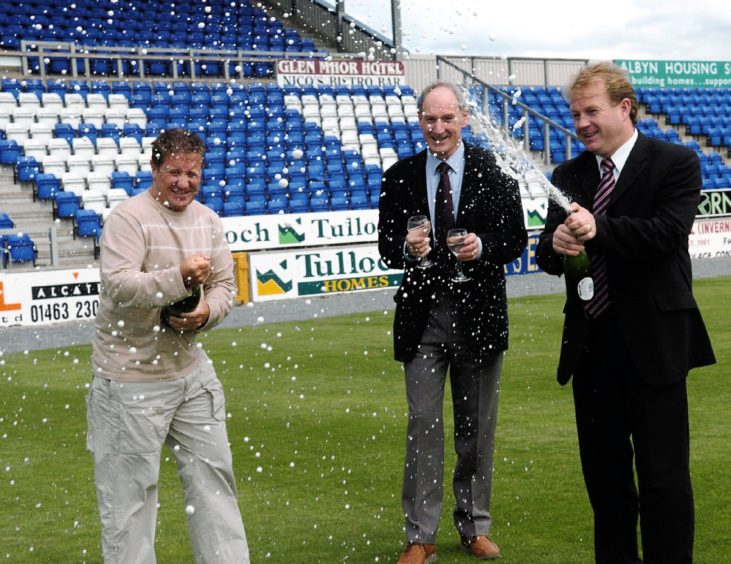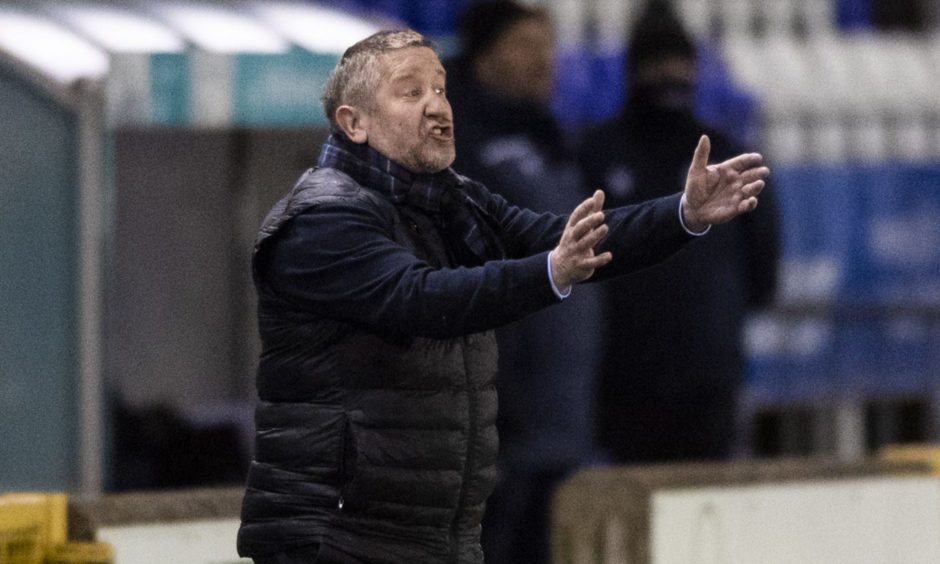Graeme Bennett was the man responsible for first bringing John Robertson to Caley Thistle – and he feels his managerial legacy shows he made the right decision.
Inverness had already made strides through the divisions under Steve Paterson, but his departure for Aberdeen in 2002 left the Highlanders searching for somebody to help them take the final step from the First Division.
Within 18 months of being handed his first managerial job as Paterson’s successor, Robertson succeeded in that task to bring Scottish Premier League football to the Highlands, 10 years after Caley Jags were formed.
Robertson’s achievement alerted the attention of his former club Hearts a short time afterwards, but he would return to Inverness in 2017 with the remit of stabilising the club following its relegation from the Premiership.
After four years of consistently challenging for a return to the top flight, it was last week announced Robertson would move upstairs to a new sporting director role, having recently taken a period of absence on compassionate leave.
Having taken charge of nearly 250 games across his two spells, overseeing three Challenge Cup victories and three Scottish Cup semi-finals in addition to the First Division triumph, Robertson’s place in Caley Thistle folklore is beyond doubt.
Former Caley Jags director of football Bennett initiated the first discussions with Robertson nearly 19 years ago, and he feels the 56-year-old’s record over two spells speaks for itself.
Bennett said: “When Steve Paterson left us, he was very difficult to replace.
“I was looking about and there were the usual suspects.
“When I spoke to the board, we wanted a young coach with a few contacts in the game.
“I did a bit of research and spoke to a few people, and his name kept coming up.
“At that time he was coaching at Livingston with Davie Hay and Jim Leishman.
“I was fortunate that, at that time, the chairman David Sutherland was working in tandem with Dominic Keane, the Livingston chairman. I think Tulloch Homes were doing some building work at Livingston.
“After I spoke to Jim Leishman, I thought John was the man.
“He was our first choice and we were delighted to land him. For a club like ours at the time we paid quite a substantial fee for him, but it proved to be great value for money.”
Building on Steve Paterson’s foundations
Although Bennett felt the foundations for Inverness’ success were already set prior to Robertson’s arrival, he says Robertson’s unwavering belief he could get Caley Jags promoted in 2004 shone through, despite them trailing Clyde by six points with six games.
Bennett added: “I think he would be the first to say he inherited a great squad. There were some great players who got Steve the move to Aberdeen. The likes of Bobby Mann, Barry Robson and Dennis Wyness were just a few of them.
“One of his best decisions was to take Donald Park with him.
“They were a great foil for each other. As much as Robbo is very well respected, he made a great decision to take Donald with him.
“It was John’s first job as a manager. He had come out of coaching but he hadn’t managed.
“He did fantastically well. We were well adrift of Clyde, and he was the one that was still drumming it into everyone that we could do it.”
The surge towards the title quickly put the onus on to the board to organise a home venue for playing in the top flight, with Caledonian Stadium falling short of the 10,000 all-seated rule that existed in the SPL at the time.
Bennett said: “That in itself was a big problem for the club, that we could win the league and not be promoted.
“By that time we were down the road with Aberdeen being an option, but he was putting a bit of pressure on the board by saying he could get us up, if we could deliver somewhere for us to play.
“For him to get us straight up to the SPL, and then do so well in our first season when we played the first half of it at Aberdeen, was a fantastic achievement.
“Everyone had us written off, but as usual, Robbo was saying ‘we can do this.’
“Like every other manager, it’s a gamble whoever you go for. It proved to be a very valuable one for us.”
A different job on Robertson’s hands in second spell
Although Bennett stepped down from Caley Jags’ board in 2013, he has remained in close contact with Robertson since their paths initially crossed.
Bennett says Robertson’s understanding of the financial resources available to him at Caledonian Stadium made him an easy manager to work with.
He added: “Remembering back to his first spell, our club was stringent.
“Not only did we have to go to Aberdeen for home games, but we lost arguably our two best players in Bobby Mann and David Bingham because of our financial constraints.
“We were honest with him and told him those were the facts and he never moaned about anything to do with the money. If we told him we couldn’t do it, he just said fair play. He made my job easier.
“Lo and behold, we lost Bobby Mann, who was our captain and leader, but he replaced him with one of the best pound-for-pound players I believe we have ever had in Darren Dods.
“It was probably two different kinds of jobs, from when he arrived in 2002 to when he arrived in 2017.
“The first time around he inherited a club which was doing fine off the park, and on the park doing very well.
“That was contrasting in 2017 when he had to lift the club from relegation and all the cutbacks.”
Bennett believes Robertson will have plenty to contribute in his new position, despite the change in focus taking him away from the dugout.
He added: “It’s a role that I’m sure the club will come out and tell us a bit more about, in terms of what he’s going to be doing.
“I’m sure he’s got something to offer. Even when he was away from Caley Thistle, he still kept in touch.
“He won’t be at the club forever, but his affiliation with Caley Thistle is great.”
